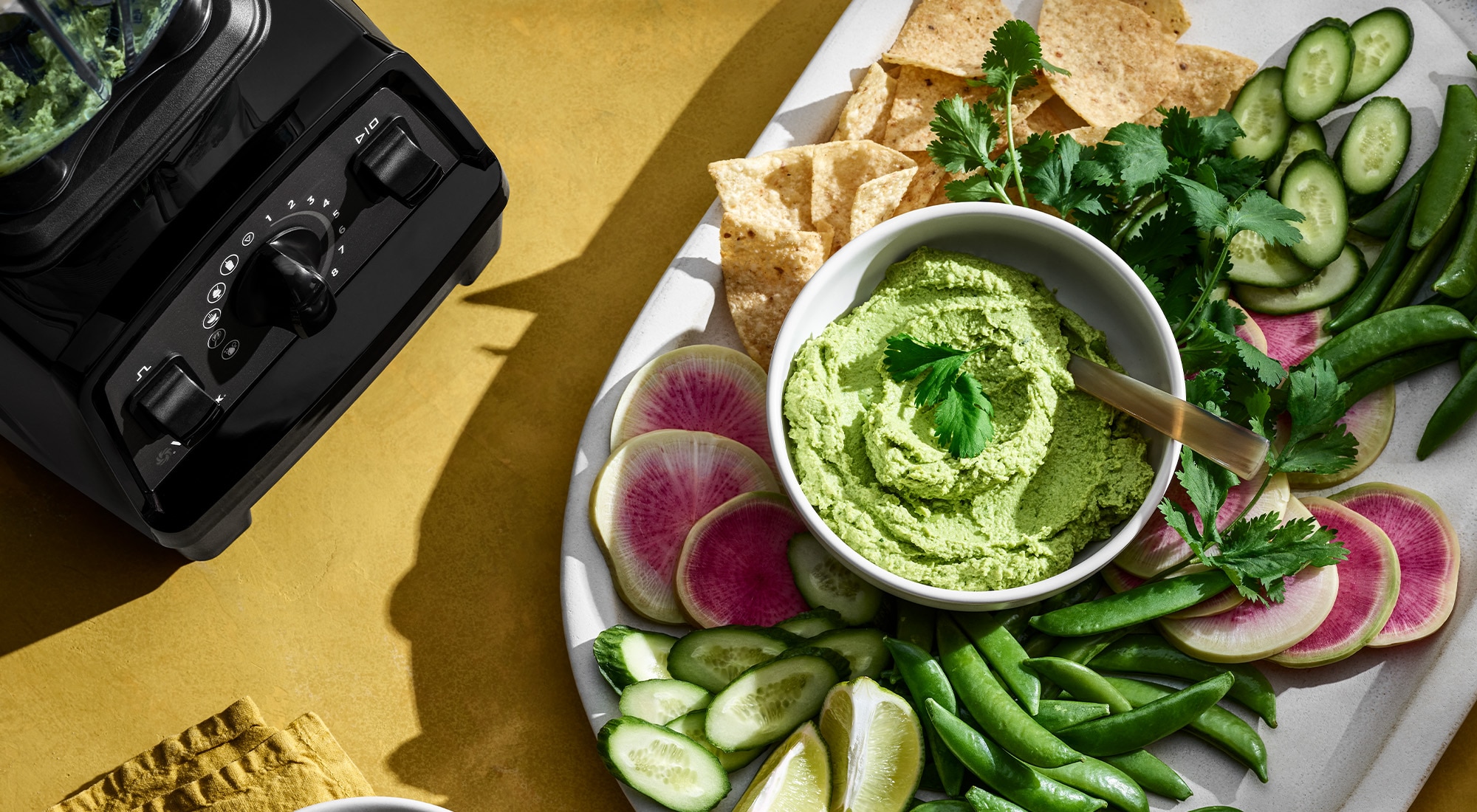Blender or food processor? If you’ve got kitchen gadget fatigue and you’re looking to free up some space on your kitchen counters, you might be asking yourself, do I really need two separate appliances? Is it possible to use a blender as a food processor? While blenders and food processors can perform many of the same functions, there are key differences that can help determine which one is best for what you want to create in the kitchen.
Blenders, with their versatile speed settings are great for crushing, pureeing, and liquefying, allowing you to embark on a variety of tasks and make delicious creations. On the other hand, food processors are the go-to for slicing, shredding, and chopping. A general rule of thumb? If you’re making something you can drink, drizzle, or dip, use a blender. If you’re making something that requires utensils to enjoy, you probably need to use a food processor. Read on for a closer look at how the two machines differ and what your blender can do beyond blending.
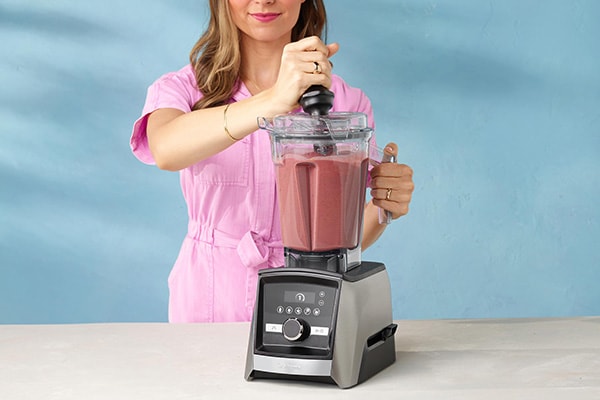
The High-Performance Modern Blender: More than Just Blending
There’s a reason blenders and beverages are linked in our minds. The earliest blenders were invented in the 1920s, and the basic design, featuring a spinning blade at the bottom of a tall container, was perfect for mixing milkshakes. The blender became a staple in malt shops and burger joints across the country.
When blenders moved from commercial use in eating establishments to domestic use in family kitchens, they gained more functionality. The shape and size of the container, along with the blender blade, were engineered to create a more efficient blending vortex. More powerful motors and innovative blade design made it easier to blend down tough ingredients.
These improvements added to the culinary techniques a blender could perform, expanding its role in the realm of kitchen appliances. The modern blender was born, and today’s high-performance blender is capable of so much more than liquefying ingredients. It can mince garlic, chop carrots, mix batter, grate hard cheeses— it can even make hot soup!
In addition to traditional blenders, you may have also heard of immersion blenders, another versatile tool in the world of kitchen appliances. These handheld devices offer a unique way to blend and mix, providing an alternative to the more traditional countertop blenders.
Blending Container
Every angle of the Vitamix blending container is designed to create a uniquely controlled vortex that systematically folds ingredients back to the blades for faster, smoother blends. The vented lid and lid plug let you bring dishes to hot serving temperatures right in the container, or add ingredients while blending to adjust texture.
Powerful Motor
https://www.vitamix.com/ca/en_us/why-vitamix/durability
Our motor maintains even torque and a cool temperature to consistently deliver the power you need to process any ingredient.
Blades
The blades in a Vitamix container reach speeds fast enough to create heat through friction, bringing cold ingredients to steaming hot in about six minutes. Made from aircraft-grade, stainless steel, our blades are designed to handle the toughest ingredients and deliver consistent, quality results every time.
With blenders being this versatile, who needs a food processor, right? Not so fast! The food processor has its roots in speeding things up in the kitchen. A salesman for a French catering company noticed chefs spent a great deal of time chopping, slicing, and mixing. The enterprising salesman-turned-inventor came up with a simple design, a spinning blade at the base of a bowl (sound familiar?) to make prepping food faster and easier.
An American engineer raised in France thought that, with a few tweaks, this machine would be a big hit in the United States. So he improved the blades and chopping disk, added safety mechanisms, and, in 1973, introduced his machine to the world. It flopped. Big time. American housewives dismissed it as nothing more than a souped-up blender!
But the engineer didn’t give up. He sent his version of the food processor to famous culinary rock stars like James Beard and Julia Child, who recognized the machine’s value as a time-saver and helped popularize it with home cooks. Today’s food processor, with its sharp blades, makes quick work of knife work, so you can breeze through chopping, slicing, mincing, dicing, and shredding -- food processors can even knead dough and churn butter!
Work Bowl
A food processor’s work bowl is wider and shorter than a traditional blending container. A broader, shallower, work bowl requires less liquid to incorporate ingredients, making it easier to process thicker, drier batches. Work bowls come in various sizes that range from 6 to 14 cups in capacity. The Vitamix Food Processor Attachment’s work bowl has a feed chute and comes with a food pusher to move ingredients closer to the blades.
Powerful Motor
A food processor’s motor is very similar to a blender’s motor. The Vitamix Food Processor Attachment uses the same motor and base as our blenders and is engineered for consistency, efficiency, and power.
Blades
Blades are at the heart of a food processor’s versatility. Unlike fixed blender blades, food processors come with removable blades and discs for a wide range of processes. The Vitamix Food Processor Attachment’s blades include a multi-use, S-shaped blade that sits at the bottom of the work bowl and finely chops, minces, kneads, and mixes ingredients; a Small Shred/Thin Slice Disc for fine shredding and thin slicing; a Large Shred/Thick Slice Disc for coarse shredding and thick slicing; a Julienne Disc for long, thin cuts; and a Veggie Stick Disc for perfectly-shaped fries.
Before we take a more detailed look at what you can create with a high-performance blender and accessories, let’s briefly summarize the similarities and differences between a blender and a food processor.
Both blenders and food processors have a similar basic design of a container atop a motor base. Both utilize rotating blades at the bottom of the container to break down ingredients. And both can handle simple tasks like pureeing and mixing.
The differences? The blender’s tall, narrow blending container is perfect for liquid blends like smoothies, soups, and sauces, while the food processor’s broad, wide bowl requires less liquid and is ideal for creating chunkier textures and mixing doughs. A blender’s fixed blades rotate faster than a food processor’s, giving the blender the power to crush ice and pulverize tough ingredients for a smoother blending process. What the food processor’s blades lack in speed, they make up for in variety. The removable S-shaped blade rocks quick and easy meal prep tasks like chopping, dicing, and mincing, while specialized discs let you effortlessly execute more advanced culinary techniques like shredding and julienning.
Remember the rule of thumb mentioned earlier: If you’re making something to drink or drizzle, use a blender. If you’re making something that requires a spoon or fork (or a spork!), use a food processor. But before you relegate your blender to smoothie duty, let’s explore attachments and containers that can expand your blender’s capabilities and give the food processor a run for its money.

Exploring Your Blender’s Food Processing Capabilities
With the right accessories and attachments, you can transform your blender into a versatile kitchen tool capable of performing a host of culinary techniques beyond just blending.
Crushing and Grinding
If you touch the blades of a high-performance blender, you’ll notice that they’re not very sharp. That’s because our premium blender’s blades break down ingredients by pulverizing them. Our blender’s power makes it easy to mill whole grains into fresh flours, grind whole beans into your favorite coffee, and crush whole herbs and spices into flavorful seasoning blends.
All of our containers can crush and grind ingredients, but the blades in our Vitamix Dry Grains Container are specifically designed to create a reverse vortex, pushing dry ingredients away from the blades to prevent packing.
Pro tip: The longer you grind your ingredients, the finer the end result will be. Precise textures are as easy as turning the dial or choosing a blending program.
Pureeing and Mashing
Blenders and pureeing go together like chickpeas and hummus. Pureeing is the culinary process by which solid foods, like chickpeas, for instance, are broken down into a smooth, almost viscous texture, like hummus. In a single process, your blender delivers the precise texture and flavor refinement you want without extra steps like straining the puree through a sieve.
To get the effect of mashing, try using your blender’s Pulse feature. The Pulse function gives you greater control of your blend so you can deliver short bursts of power to break down ingredients to the texture you desire. Try this creamy, smooth mashed potato recipe and you’ll never eat lumpy mashed potatoes again.
If you’ve got a little one at home, consider pureeing your own baby food. Pureed baby food is a cost-effective and customizable way to give your baby the freshest, most nutritious ingredients without all the additives and preservatives in store-bought baby food. Consult your pediatrician with any questions regarding the safe introduction of solid foods or any homemade baby food recipes.
Mixing and Emulsifying
Your blender can mix the ingredients for dough and simulate the kneading process. Make everything from pizza dough and homemade pasta to French bread and soft pretzels by using the Pulse function to incorporate ingredients and form a ball of dough.
If a recipe calls for emulsifying and your first instinct is to panic, your blender is here to help. To emulsify means to combine two ingredients that normally don’t mix together very well, like oil and water. Traditionally, emulsification occurs when the liquids are combined slowly, drop by drop, while being beaten or whisked vigorously. When you use your blender, pour your liquid slowly through the lid plug opening, let the blades do the beating, and create your emulsification in seconds.
You can use any Vitamix container to emulsify, but our Aer™ Disc Container is uniquely designed to perform this technique effortlessly. It’s perfect for creating simple vinaigrettes, hollandaise sauce, aioli, and more.
Chopping and Dicing
In the great blenders vs food processors debate, food processors would seem to have the edge when it comes to chopping and dicing, but don’t sell your blender short. Our blenders have enough power to quickly break down large chunks of fruit and veggies. They can rough-chop for chunky dips and sauces, reducing the amount of knife work you have to do and saving time on food prep.
Try Drop Chopping for a quick dice, making cooking with ease a reality. Drop ingredients like onion, garlic, or carrot through the lid plug opening, and let the spinning blades do the chopping.
Wet Chopping lets you quickly mince or “rice” large amounts of veggies like cauliflower, further enhancing your ability to prepare meals with ease. Break the veggie into large chunks, place them in the blending container, and fill it with enough water so that the veggies are floating above the blades. Then pulse the blender until the desired texture is reached, strain the water out, and you’re ready to go. Your blender transforms into a versatile food chopper, helping you streamline your cooking process.
Heating
Is there anything a blender can do that a food processor can’t? When it comes to versatility, blenders really bring the heat — literally! Thanks to a powerful motor, a Vitamix blender’s blades spin fast enough to create friction. That friction creates enough heat to make steaming-hot soup, right in the container in under 10 minutes! This feature is also a great way to make delicate custards and sauces at the right temperature without scorching them.
Comparing the two machines side by side, it’s clear the blender can not only perform food processing tasks; it can also make dishes the food processor can’t. Let’s look at some tasty culinary creations your blender can make.
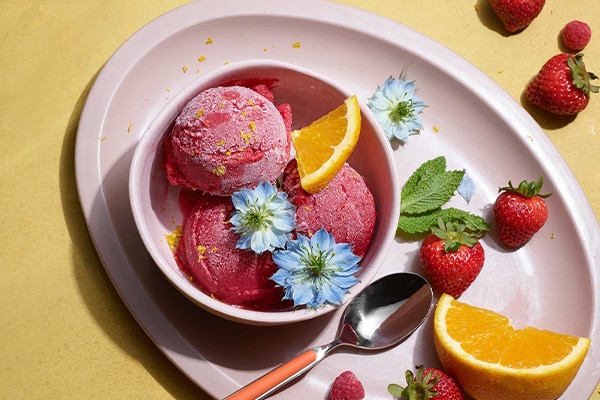
Homemade, Made Easy
Now that you know what your blender can do, why not put it to the test? Using your blender to create healthy, whole-food dishes puts you in control of what you put in your body. Making food from scratch is healthier because it helps you avoid unnecessary additives and artificial preservatives. It’s also economical because buying in bulk and planning meals can help save money.
Nut Butters
Nut butter is a nutritious spread that’s high in protein, essential fatty acids, and fiber. Your blender creates the perfectly smooth texture for spreading on bread or adding to dips and sauces.
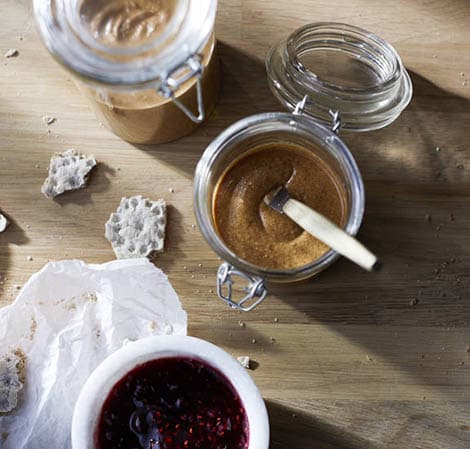
Almond Butter

Cashew Butter

Pistachio & Orange Butter
Frozen Treats
Remember the way your premium blender made steaming-hot soup? That same friction breaks down frozen ingredients and creates delicious chilled desserts in minutes. It’s an easy way to make healthier versions of your favorite frozen treats, minus the dairy and excess sugar.

Mango Basil Freeze

Caramel Espresso Frappé
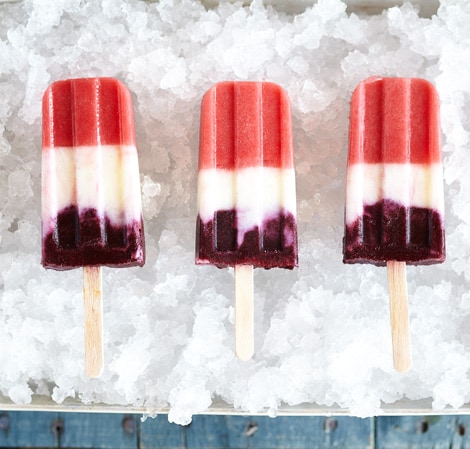
Red, White, and Blue Pops
Energy Bars
Lots of people reach for an energy bar for a quick, post-workout boost or an afternoon pick-me-up. But store-bought bars can have extra calories and added sugars like high fructose corn syrup, not to mention their chalky, artificial taste. Let your blender break down the tough ingredients in these recipes for guilt-free treats with a whole-food energy boost.

Gluten-Free Date Nut Bars
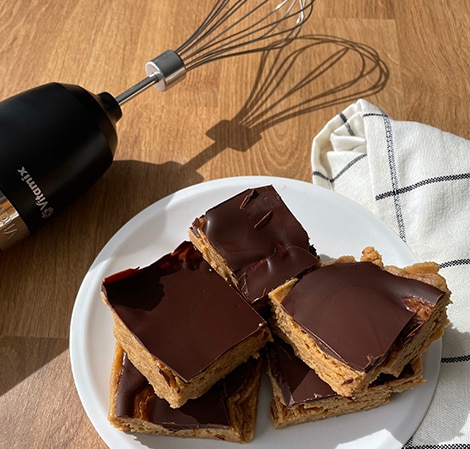
Peanut Butter Protein Bars

Cashew Energy Balls
Soup
With your blender’s ability to heat ingredients through friction, soups can typically be brought to 170°F in just 5 minutes of blending on High. You’ll love the “wow” factor of steaming-hot soup poured fresh from your blending container. And unlike making soup in crockpots or on stove tops, cleanup is a breeze – just blend warm water and a drop of dish soap at your machine's highest speed, and watch it self-clean in 60 seconds or less.
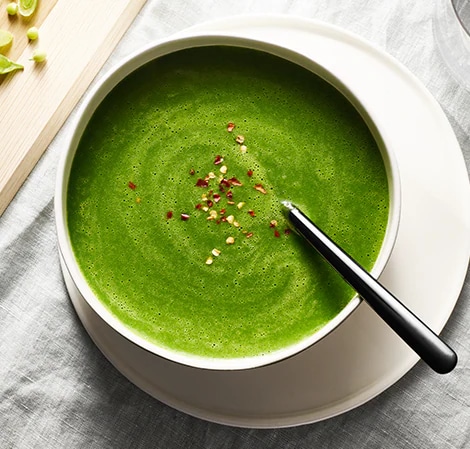
Vegan Pea and Kale Soup
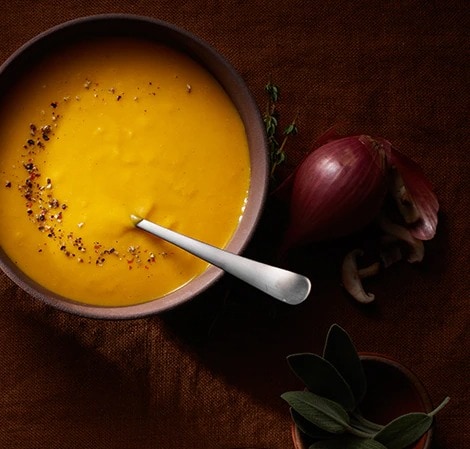
Coconut Red Curry Squash Soup
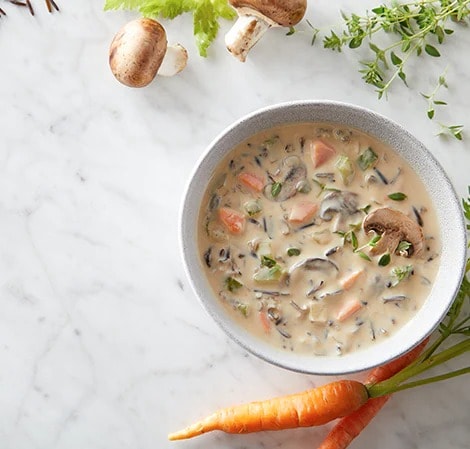
Creamy Wild Rice Soup
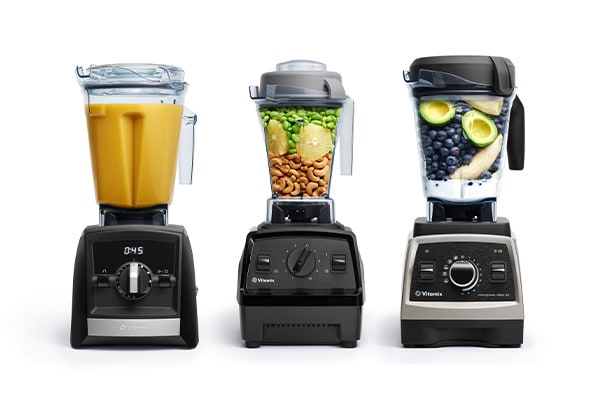
Best Tips for Food Processing with Blenders
Find the Right Blender
The best way to get the most effective food processing from your blender is to make sure you’re using the right blender for you. To find the blender with the capabilities you need, try the Blender Recommender. It’s designed to guide you through the different categories, features, and options – just answer a few simple questions, and we’ll suggest a blender that matches your preferences.
Create the Right Texture
Your blender can process a whole range of textures from chunky to smooth. If you’re a bending newbie or you prefer the walkaway convenience of automated options, use a blender with blending programs. Our blending programs are designed to perfectly blend many common recipes so you achieve the right texture every time.
If you’re more experienced, choose a blender with our unique Variable Speed Dial. The dial lets you manually control your machine’s speeds from level 1 to 10 and everywhere in between, so you can fine-tune textures to your liking.
The Pulse function is available on select models. It gives you greater control of your blend with the ability easily turn your machine on and off again with the flick of a switch or press of a button. Sometimes it takes only a few pulses to get the perfect texture you desire.
Take Care of your Blender
Your blender works better when it’s well cared for and taken care of. One of the best ways to keep your blender in excellent working condition is to keep it clean. Here are step by step instructions for regular and deep cleaning your machine.
If your machine has a pre-programmed Clean setting, perform the following steps:
After each use, rinse the container thoroughly with warm water—not hot.
Place one to two drops of dish soap in your container and fill it halfway with warm water.
Secure the lid with the lid plug in the locked position.
Select the Clean setting and start the machine.
Your machine will automatically turn off when the cycle is complete.
Pour contents out and rinse thoroughly.
Turn the container upside down and let air dry.
If your machine does not have a Clean setting, perform the following steps:
After each use, rinse the container thoroughly with warm water—not hot.
Place one to two drops of dish soap in your container and fill it halfway with warm water.
Secure the lid with the lid plug in the locked position.
Start the machine on Variable Speed 1, slowly increase to Variable Speed 10, and then switch to High.
Run on High for 30-60 seconds.
Pour contents out and rinse thoroughly.
Turn the container upside down and let air dry.
For a deep clean, perform the following steps monthly or as needed:
Place 4 cups of cool water and 4 cups of white vinegar into the container and let it soak for about four hours. Pour contents out and rinse thoroughly. Then follow the appropriate cleaning instructions above.
We don’t recommend placing the container or lid into the dishwasher as this may harm its components.
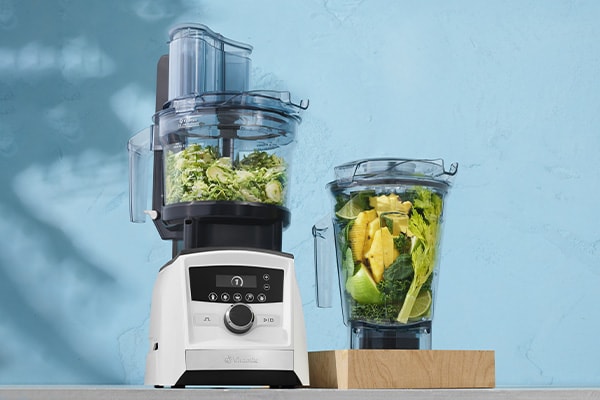
Blender + Food Processor = Best of Both Worlds
Blenders can do everything a food processor can, but there are some tasks food processors do more efficiently and more precisely, like slice, shred, and chop.
But while food processors are very useful, they’re also among the least-used kitchen tools. Research shows most households only use their food processor a few times per month or less. Food processors can be inconvenient to use because they’re heavy, require lots of space, and are usually stored away from the main kitchen area.
That’s why Vitamix created the Food Processor Attachment. This lightweight blender accessory pairs with the motor base to perform all the precision slicing, chopping, and processing of a premium, stand-alone food processor. Its progressive design makes it easy to store and even easier to assemble and use.
The versatility of a blender and the precision of a food processor, powered by Vitamix? Yes, please!
Blenders are perfect for creating liquid-based recipes like soups, smoothies, and sauces, while food processors are great at making quick work of tasks like chopping, slicing, kneading, and grating. Whether you opt for a blender, a food processor, or both, these kitchen tools can significantly enhance your cooking experience and open up an exciting world of culinary possibilities.
FAQs:
- Can all blenders perform the advanced food processing tasks mentioned?
- Vitamix blenders create a full range of textures, from chunky salsas to silky smoothies, letting you adjust each blend to your own taste buds. Learn more about what you can make in a Vitamix machine.
- What features should I look for when selecting a blender for food processing?
- Blades: Vitamix uses aircraft-grade stainless steel blades designed to handle the toughest ingredients, so from the first blend to the last, you get the same quality results.
- Motor: Our motor maintains even torque and cool temperature to consistently deliver the power you need to process any ingredient.
- Simple Controls: User-friendly controls simplify even the trickiest of recipes, whether you're manually adjusting the blade speed or leaving it to an automated program.
Is it more cost-effective to prepare nut butter and spreads at home using a blender?
- Buying ingredients in bulk and making nut butter in your blender saves money, allows for customization, and allows you to create additive- and preservative-free nut butters.
Are there any foods that blenders cannot process effectively?
- Blenders are not designed for tasks like processing heavy dough. Thick, dense doughs can damage blades and strain the motor. Also, the narrow container is not ideal for kneading heavy dough.
Can blenders handle both wet and dry ingredients for processing?
- Yes. Our blending containers are designed to wet and dry blending.



